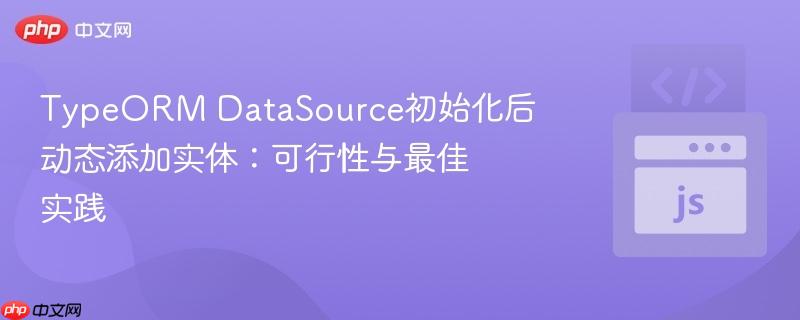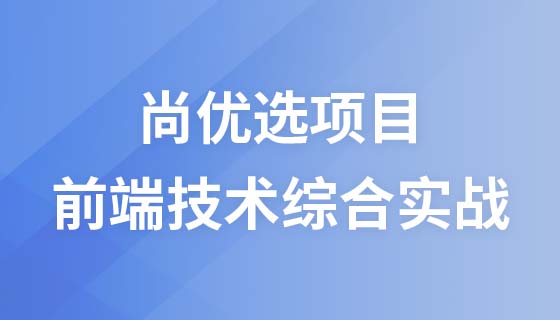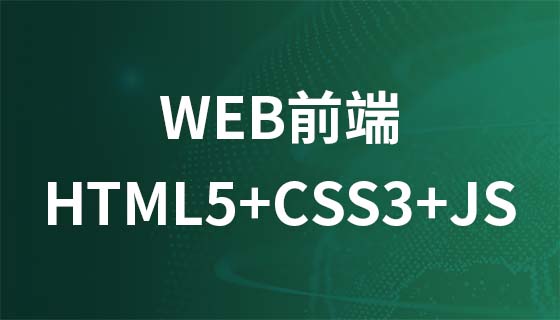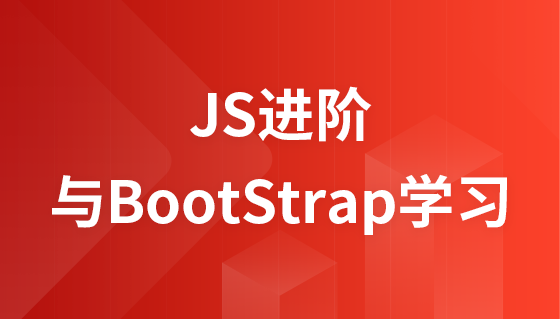
本文探讨了typeorm中`datasource`初始化后动态添加实体的可行性。文章将解释为何typeorm设计上不支持运行时直接修改已初始化`datasource`的实体集合,并提供在启动时加载所有实体、重新初始化`datasource`以及使用多`datasource`实例等替代方案和最佳实践,以有效管理数据库实体,同时强调实体定义的完整性。
在TypeORM应用开发中,DataSource实例是与数据库交互的核心。它负责管理数据库连接、事务以及最关键的——实体(Entity)的元数据。开发者经常会遇到一个问题:在DataSource已经通过initialize()方法完成初始化之后,是否还能动态地向其添加新的实体类?
根据TypeORM的设计,一旦DataSource被初始化,其配置中的entities数组就会被用来构建ORM内部的元数据映射。这意味着,AppDataSource.options.entities在初始化后会变为只读状态,尝试直接修改这个数组并不能使新的实体被TypeORM识别和管理。这引发了对运行时动态实体管理的疑问和挑战。
TypeORM的DataSource在调用initialize()方法时,会执行一系列关键操作:
这个过程确保了DataSource在启动时就拥有了所有必要的上下文信息,以便能够正确地执行数据库操作。由于元数据是在初始化时一次性构建的,并且是ORM内部高效运行的基础,因此TypeORM并未提供在运行时动态修改或增量添加实体元数据的原生API。
AppDataSource.options.entities在DataSource初始化后是只读的,这并非偶然,而是TypeORM设计哲学的一部分。其主要原因包括:
因此,TypeORM明确不支持在DataSource初始化后通过修改options.entities数组来动态添加实体。
尽管TypeORM不直接支持运行时动态添加实体,但针对不同场景,我们可以采用以下策略来有效管理实体:
这是最常见、最推荐且最稳健的方法。在应用程序启动阶段,确保所有可能用到的实体都被包含在DataSource的entities配置中。TypeORM支持使用通配符(glob patterns)来自动发现和加载实体文件,极大地简化了管理。
示例代码:
import { DataSource } from "typeorm";
import * as path from "path";
// 假设 Product 和 Cart 实体定义在 ../entity/ 目录下
// Product 实体定义示例 (确保包含所有列)
// import { Entity, PrimaryGeneratedColumn, Column } from "typeorm";
// @Entity()
// export class Product {
// @PrimaryGeneratedColumn()
// id: number;
// @Column()
// name: string;
// @Column({ nullable: true })
// description: string;
// }
// Cart 实体定义示例 (确保包含所有列)
// @Entity()
// export class Cart {
// @PrimaryGeneratedColumn()
// id: number;
// @Column()
// userId: number;
// @Column()
// quantity: number;
// }
export const AppDataSource = new DataSource({
type: "postgres",
host: "localhost",
port: 5432,
username: "engineerhead",
password: "",
database: "test",
synchronize: true, // 生产环境请谨慎使用 synchronize: true
logging: false,
entities: [
// 使用通配符加载所有位于 '../entity/' 目录下的 .ts 或 .js 实体文件
// 生产环境部署时,通常编译为 .js 文件,所以可能需要同时包含 .ts 和 .js
path.join(__dirname, "../entity/*.ts"),
path.join(__dirname, "../entity/*.js"),
// 如果需要明确列出,也可以这样:
// Product,
// Cart,
],
migrations: [],
subscribers: [],
});
export default async () => {
try {
await AppDataSource.initialize();
console.log("DataSource initialized successfully with all entities.");
} catch (error) {
console.error("Error during DataSource initialization:", error);
process.exit(1); // 初始化失败,退出应用
}
};通过这种方式,无论Product还是Cart,甚至未来新增的任何实体,只要它们被放置在指定的目录中,并在启动时被entities配置捕获,TypeORM就能正确地识别和管理它们。
理论上,如果确实需要在运行时更改实体集合,唯一的方法是销毁当前的DataSource实例,然后使用新的实体集合重新创建一个并初始化它。
注意事项:
示例(概念性,不推荐在实际应用中频繁使用):
import { AppDataSource } from "./data-source";
import { AnotherNewEntity } from "../entity/AnotherNewEntity"; // 假设这是需要动态添加的实体
async function addEntityAndReinitialize() {
// 1. 关闭现有 DataSource
if (AppDataSource.isInitialized) {
await AppDataSource.destroy();
console.log("Existing DataSource destroyed.");
}
// 2. 获取原有实体列表,并添加新实体
// 注意:这里需要重新构建一个全新的 DataSource 配置对象
const currentEntities = AppDataSource.options.entities; // 这只能获取到初始化时的配置
const newEntitiesConfig = Array.isArray(currentEntities) ? [...currentEntities, AnotherNewEntity] : [AnotherNewEntity];
// 3. 创建并初始化新的 DataSource 实例
const newDataSource = new DataSource({
...AppDataSource.options, // 复制原有配置
entities: newEntitiesConfig, // 使用新的实体列表
});
try {
await newDataSource.initialize();
console.log("DataSource re-initialized with new entity.");
// 现在你的应用程序应该使用 newDataSource 实例
// 替换掉旧的 AppDataSource 引用
// 例如:global.AppDataSource = newDataSource;
} catch (error) {
console.error("Error during DataSource re-initialization:", error);
// 错误处理
}
}在某些复杂的应用场景中,例如多租户系统或具有高度模块化且实体集完全独立的微服务,可以考虑使用多个DataSource实例。每个DataSource实例管理其独立的实体集合和数据库连接。
示例:
import { DataSource } from "typeorm";
import { Product } from "../entity/Product";
import { Cart } from "../entity/Cart";
import { User } from "../entity/User"; // 假设是另一个独立的实体
// 第一个 DataSource,用于管理核心业务实体
export const CoreDataSource = new DataSource({
type: "postgres",
host: "localhost",
port: 5432,
username: "core_user",
password: "",
database: "core_db",
entities: [Product, Cart],
synchronize: true,
});
// 第二个 DataSource,可能用于管理用户认证或特定模块的实体
export const AuthDataSource = new DataSource({
type: "postgres",
host: "localhost",
port: 5432,
username: "auth_user",
password: "",
database: "auth_db",
entities: [User],
synchronize: true,
});
export async function initAllDataSources() {
await CoreDataSource.initialize();
await AuthDataSource.initialize();
console.log("All DataSources initialized.");
}这种方法增加了架构的复杂性,但在需要严格隔离不同实体集时非常有用。应用程序的不同部分将使用不同的DataSource实例来执行数据库操作。
在原始问题中,Product和Cart实体只定义了@PrimaryGeneratedColumn()装饰器,而没有为其他属性定义@Column()。这是一个常见的TypeORM初学者错误,需要特别注意。
TypeORM实体定义规则:
正确的实体定义示例:
import { Entity, PrimaryGeneratedColumn, Column } from "typeorm";
@Entity()
export class Product {
@PrimaryGeneratedColumn()
id: number;
@Column()
name: string; // 必须使用 @Column() 标记
@Column({ nullable: true }) // 可以定义列选项,如是否可空
description: string;
@Column({ type: "decimal", precision: 10, scale: 2 })
price: number;
}
@Entity()
export class Cart {
@PrimaryGeneratedColumn()
id: number;
@Column()
userId: number; // 必须使用 @Column() 标记
@Column()
productId: number;
@Column()
quantity: number;
}确保所有实体属性都使用正确的装饰器进行标记,是TypeORM能够正确映射对象到关系型数据库的基础。
TypeORM的DataSource在初始化后,其管理的实体集合是固定的,不支持运行时直接动态添加实体。这是为了保证ORM内部元数据的一致性和运行效率。
核心结论与最佳实践:
遵循这些原则,开发者可以更有效地管理TypeORM项目中的实体,确保应用程序的稳定性和可维护性。
以上就是TypeORM DataSource初始化后动态添加实体:可行性与最佳实践的详细内容,更多请关注php中文网其它相关文章!

每个人都需要一台速度更快、更稳定的 PC。随着时间的推移,垃圾文件、旧注册表数据和不必要的后台进程会占用资源并降低性能。幸运的是,许多工具可以让 Windows 保持平稳运行。




Copyright 2014-2025 https://www.php.cn/ All Rights Reserved | php.cn | 湘ICP备2023035733号